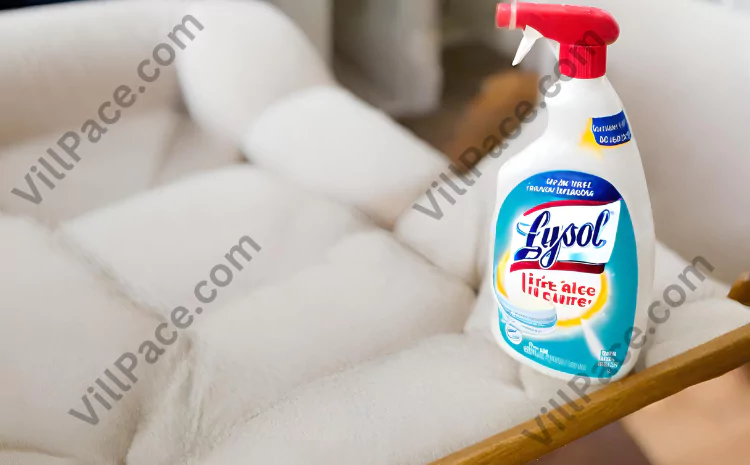The sheer torment inflicted by seemingly unescapable lice turns desperate parents towards any solutions offering hope. With Lysol Kill Lice concentration boasting powerful antimicrobial cleansing across surfaces, struggling households understandably wonder about its potential eradicating lice from infested furniture and bedding.
This investigative report delivers a sobering reality check – scientifically establishing clear reasons why Lysol cannot kill lice, larvae, or nits infesting upholstery. We’ll examine alternative proven treatment methods succeeding where Lysol fails. Arm yourself with truth protecting families from further wasted efforts, time, and money on ineffective lice removal tactics.
Key Takeaways
- Despite disinfecting claims, Lysol lacks any clinically-demonstrated lice-killing effect on furniture, bedding, or human bodies.
- No “quick sprays” safely mitigate upholstery lice infestations – slow systematic approaches using specialized miticides work.
- Lysol risks significant skin irritation and offers false hope – avoid using on lice problems.
Why Lysol Fails Killing Lice – Biology and Chemical Composition Realities
Lysol concentrate contains potent antibacterial and antimicrobial compounds – namely ethanol, essential oils, and benzalkonium chloride within a moderately acidic vehicle. Such agents powerfully rupture single-celled microorganisms’ membranes upon exposure.
But critically, multicellular lice and their larvae phases demonstrate more complex anatomy protecting vital internal systems. While Lysol may initially irritate exterior waxy coatings, eventually lice return unscathed as Lysol evaporates without reaching lethal concentration thresholds internally.
Even thoroughly dousing upholstery fails killing lice long term. Powerful pesticidal resistance also evolved within lice over centuries battling human chemical attempts. Hence lacking specialized biologically-calculated lethality, Lysol merely temporarily displaces rather than resolves infestations by the following limitations:
1. Inadequate Residual Effect – Lysol rapidly volatilizes rather than persisting at potent levels.
2. No Penetration Reaching Eggs – Impermeable nit casings require mechanical breakdown using nit combs, with squeegies combing out afflicted shafts.
3. Lacks Metabolic Toxicity– No biochemical antidotes exist within Lysol for mitochondria pathways.
Professional lice termination instead utilizes meticulous, prolonged applications of highly-optimized miticides meticulously tested killing lice, larvae, and nits together through residual metabolic sabotage. This avoids attempting risky, ineffective household bleach or cleanser “quick fixes” better left avoided.
Safer and More Effective Lice Treatment Options For Upholstery
While Lysol fails furniture lice removal, 2 alternate breakthrough methods succeed:
| Method | Description |
|---|---|
| Desiccant Dusts | Water-absorbing boric acid / silica gel dusts shrivel lice and nits via severe dehydration. Brands like Cimexa, My Home Bug Killer prove superior miticides. |
| Ivermectin Lotions | Ivermectin disables nerve/muscle functions interrupting lice feeding, eventually dying. Often compounded into specialized lotions applied upholstery backsides. |
Both approaches take weeks, not overnight. But clinically-trialed, toxicity-tested safety and lethality specifically targeting lice anatomy and reproduction cycles makes them vastly superior vs general cleansers like Lysol inapplicable protecting homes. Consider negotiating professional fumigation services if severe furniture infestations warrant large-scale resolution.
The Verdict – Avoid False Lysol Hope, Embrace Proven Treatments
In conclusion, while Lysol disinfects surfaces from germs effectively, no evidence suggests efficacy killing lice on furniture or bedding at sufficient levels. Biology realities around intricate lice anatomy and pesticide resistance prohibits disinfectants like Lysol from adequately terminating infestations despite aggressive marketing claims.
Avoid frustrations and skin irritations chasing mythical “miracle quick spray solutions” like Lysol misdirected towards lice problems where they simply cannot reliably help no matter the effort invested. Instead embrace legitimate uptodate treatment regimens scientifically engineered by lice experts specifically keeping families protected. Leverage desiccant dusts or prescription lotions that lice cannot possibly resist.

Mark Thompson, a seasoned pest controller, is renowned for his expertise in keeping homes and businesses free from unwanted intruders. With a passion for environmental sustainability and a deep understanding of pest behavior, Mark has become a trusted authority in the industry.
